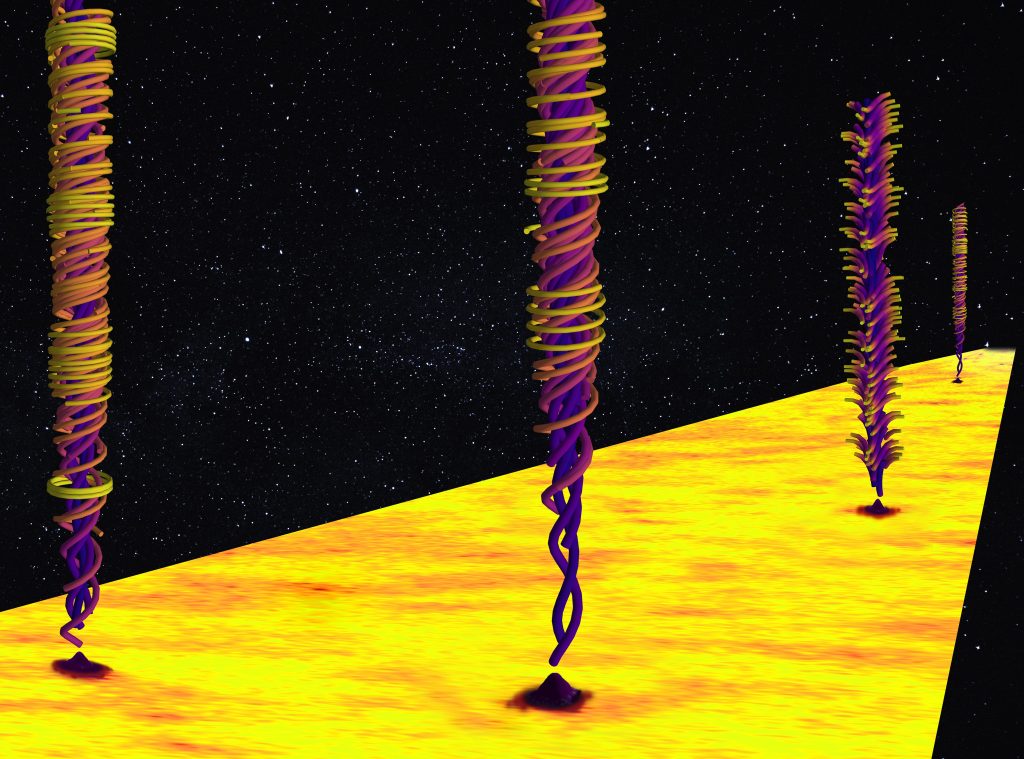- Autonomous DNA molecular motor tailor-designed to navigate DNA origami surface for fast complex motion and advanced nanorobotics
- Dimensional Transmutation from Non-Hermiticity
- Controlled alignment of supermoiré lattice in double-aligned graphene heterostructures
- Two-dimensional ferroelectricity in a single-element bismuth monolayer

Whirling vortex-like magnetic nano-textures in anti-ferromagnets are predicted to be highly robust, ultra-small and ultra-fast. Each pattern comprises many little magnetic poles winding around a core region in a clockwise or anti-clockwise manner, very much like air circulating inside a tornado or hurricane.
When realised experimentally, combinations of these anti-ferromagnetic whirls are predicted to be stable and dense structures which can potentially be moved along magnetic ‘race tracks’ at whirlwind speeds of a few kilometres per second! These could serve as mobile information components to build energy-efficient and high-performance next-generation computing.
However, experimental progress in this field has been significantly inhibited by the difficulty of visualising and reproducibly controlling these anti-ferromagnetic materials, as they appear almost non-magnetic from afar.
To realise these textures, Dr Hariom Jani under Assoc Prof Ariando’s guidance came up with a novel interdisciplinary strategy that combines high-quality film synthesis from materials engineering called pulsed laser deposition, magnetic phase transitions from physics, and topology from mathematics. Drawing inspiration from a historical idea which postulated the formation of cosmic whirls at special locations in the universe from a phase-transition of the early universe, they discovered a large family of antiferromagnetic whirls in an earth-abundant material, iron oxide, that are stable at room temperature and possess widely tuneable core sizes.
This work was published in Nature (February 2021).

